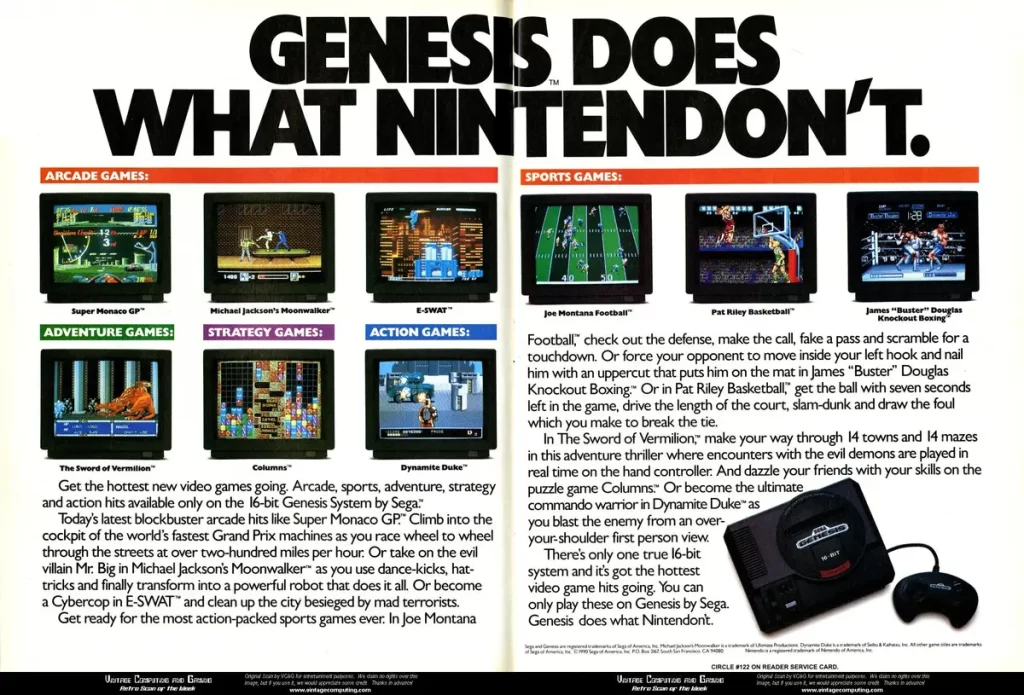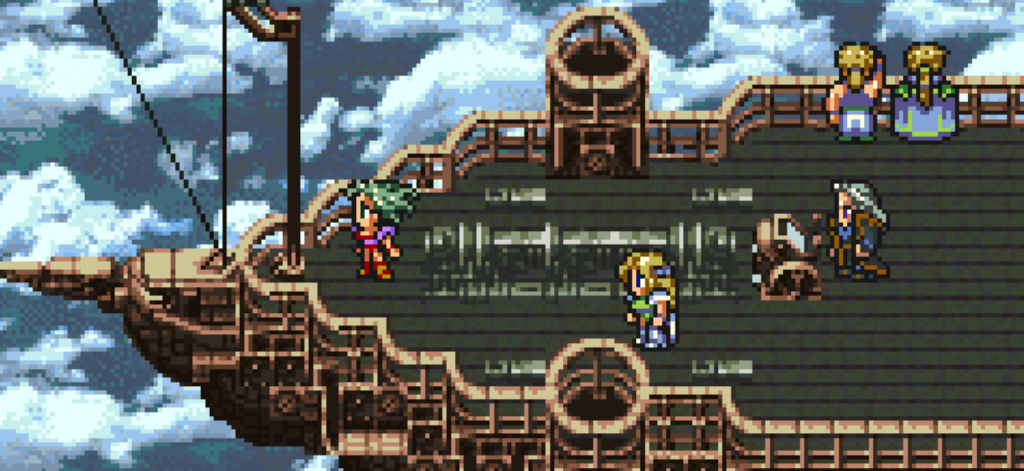The fourth generation of video game consoles, often referred to as the 16-bit era, represents one of the most influential periods in gaming history. Spanning from the late 1980s to the mid-1990s, this generation introduced some of the most iconic consoles and games, solidifying gaming as a mainstream form of entertainment.
With the rise of technological advancements, the fourth generation brought improved graphics, gameplay mechanics, and sound capabilities, revolutionizing the gaming industry. It is so influential that, to this day, the 16-bit style is the artistic choice of many games, especially in the indie industry.
Our goal today is to talk about the characteristics and legacy of this generation, as well as some of its main games and the technological advancements it brought to the video game industry.
This article is part of a complete series where we do a deep dive into each video game generation.
Fourth generation of video game consoles: Nintendo vs. Sega
It is impossible to talk about the fourth generation of video game consoles without talking about the battle between Nintendo and Sega, known to be the first “console war” in the industry.

These two competitors were at the heart of the fourth generation of video game consoles. The rivalry between their flagship consoles; Super Nintendo Entertainment System (SNES) and Sega Genesis (also known as the Mega Drive outside North America), defined the era and changed the gaming industry forever.
Released in 1990, the SNES became an instant success with its 16-bit architecture of sprites, offering improved visuals and sound compared to its predecessor, the Nintendo Entertainment System (NES).
The console boasted a library of iconic games such as Super Mario World, The Legend of Zelda: A Link to the Past, and Super Metroid. Nintendo’s mastery of storytelling and innovative gameplay helped secure the SNES as one of the most beloved consoles of all time.
But what most people don’t know is that Sega Genesis was, in fact, the first 16-bit console to gain widespread popularity, almost two years before SNES, in 1988.
It stood out for its faster processor, which allowed for smoother gameplay and more dynamic action games. The Genesis was home to classics like Sonic the Hedgehog, Streets of Rage, and Shining Force, attracting gamers looking for a more fast-paced, action-oriented experience.

Marketing battles
During this battle, both companies employed aggressive marketing strategies to capture the attention of gamers, leading to memorable ad campaigns and slogans, and boosting the video game hobby to the forefront of pop culture.
Sega’s marketing, especially in North America, positioned the Genesis as the cooler, faster, and more mature console. Their slogan, “Genesis Does What Nintendon’t”, highlighted the perceived superiority of the Genesis in terms of performance and game variety.
The edgy, action-packed appeal of games like Sonic the Hedgehog gave Sega an advantage with older gamers, while Nintendo’s more family-friendly image catered to younger audiences.
Nintendo responded by emphasizing the quality of its first-party titles and the innovation of its games. The SNES’s robust library of exclusive games like The Legend of Zelda and Super Mario Kart ensured that Nintendo maintained a loyal fanbase, despite Sega’s aggressive marketing.
Graphics and sound: the big leap forward

One of the defining characteristics of the fourth generation of video game consoles was the significant improvement in both graphics and sound. The leap from 8-bit to 16-bit technology enabled developers to create more detailed and colorful sprites, complex animations, and immersive game worlds.
The graphical capabilities of fourth-generation consoles allowed for richer, more vibrant environments, which led to the development of visually stunning games.
Titles like Donkey Kong Country on the SNES utilized advanced graphical techniques, such as pre-rendered 3D graphics, giving the game a groundbreaking appearance that amazed players at the time.
The fourth generation also marked the beginning of more sophisticated sound design in video games. Composers like Koji Kondo and Yuzo Koshiro pushed the boundaries of what was possible with the available hardware.
Games such as The Legend of Zelda: A Link to the Past and Streets of Rage feature soundtracks that remain iconic to this day – enhancing the overall gaming experience.
You may also like: The 10 greatest video game soundtracks of all time
The rise of iconic franchises

The fourth generation of video game consoles also introduced and refined several franchises that have become cornerstones of the gaming industry. During this time, players saw the evolution of classic franchises.
- Mario: With Super Mario World on the SNES, Nintendo delivered a masterclass in platforming design. The game’s expansive world, hidden secrets, and tight controls made it a standout title in the 16-bit era.
- Sonic the Hedgehog: Sega’s answer to Mario – Sonic the Hedgehog – became a cultural phenomenon, known for its blazing speed and cool protagonist. Sonic helped Sega distinguish itself from Nintendo, particularly among “cool” teenagers seeking a more edgy alternative to Mario’s cheerful, “childish” world.
- Final Fantasy: Square Enix’s Final Fantasy IV and Final Fantasy VI (released as Final Fantasy III in North America) on the SNES elevated the role-playing genre, with their engaging stories, deep characters, and expansive worlds.
- Metroid: Super Metroid on the SNES took the Metroid franchise to new heights with its atmospheric design, non-linear exploration, and tight gameplay mechanics, setting a new standard for action-adventure games.
The never-ending legacy of the fourth generation of video game consoles
The fourth generation of video game consoles had a lasting impact on the gaming industry. It was, after all, an era of immense creativity and technical innovation that laid the foundation for modern gaming. Many of the franchises that started or flourished during this time continue to thrive, while the concepts and mechanics developed then still influence game design today.
This phase also introduced many gamers to the concept of multiplayer gaming, with titles like Street Fighter II and Mortal Kombat revolutionizing the fighting game genre. These multiplayer experiences would go on to shape the future of gaming, especially in the era of online play.
At the end of the day, the fourth generation was truly a golden age for the market as a whole – filled with technological advancements, unforgettable creativity, and intense dedication that laid out the groundwork for the healthy (yet sometimes toxic) competition we’d see on the market even in the 2020s.

Create your 16-bit game with Main Leaf!
Today, the influence of the 16-bit era is still evident, as developers continue to draw inspiration from the classics of this time. For many gamers, the fourth generation remains a nostalgic and beloved chapter in the history of video games.
Many people still capitalize on this nostalgia to develop their games, and we have seen an incredible rise in the 16-bit style in recent years, especially in the indie and mobile side of the industry.
We here at Main Leaf absolutely love the fourth generation of video game consoles and the 16-bit style -and are influenced by it every day in our projects. So if you are considering developing a game like that, we would love to help you with your project and contribute to keeping this legacy alive.
Get in contact to learn more about our services and discuss a potential partnership. If you liked this article, check out our blog for many others relating to the world of video games and video game development.

